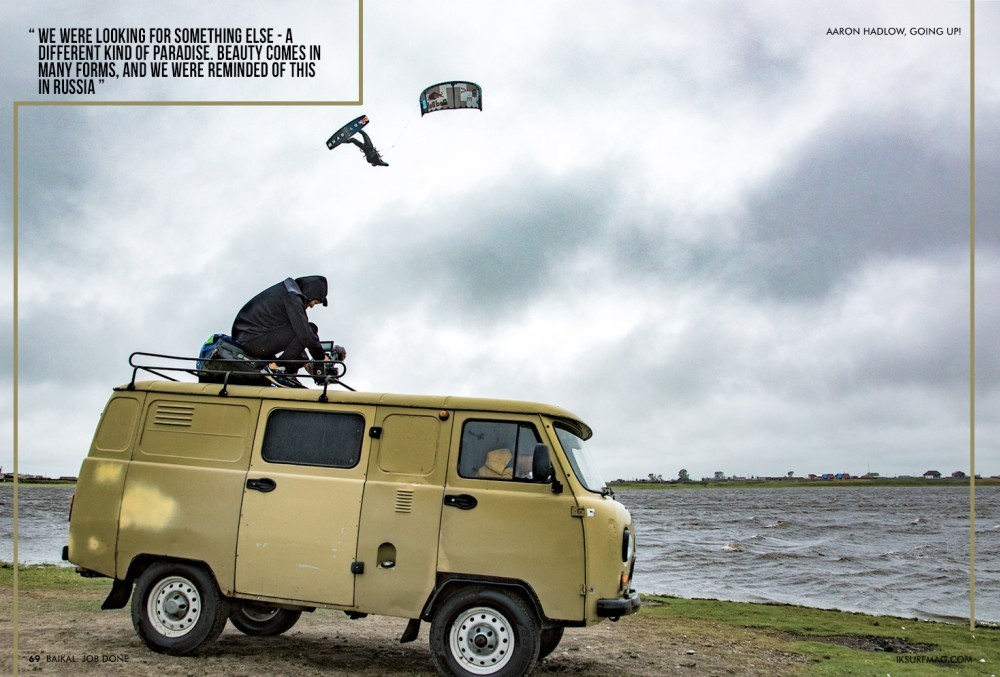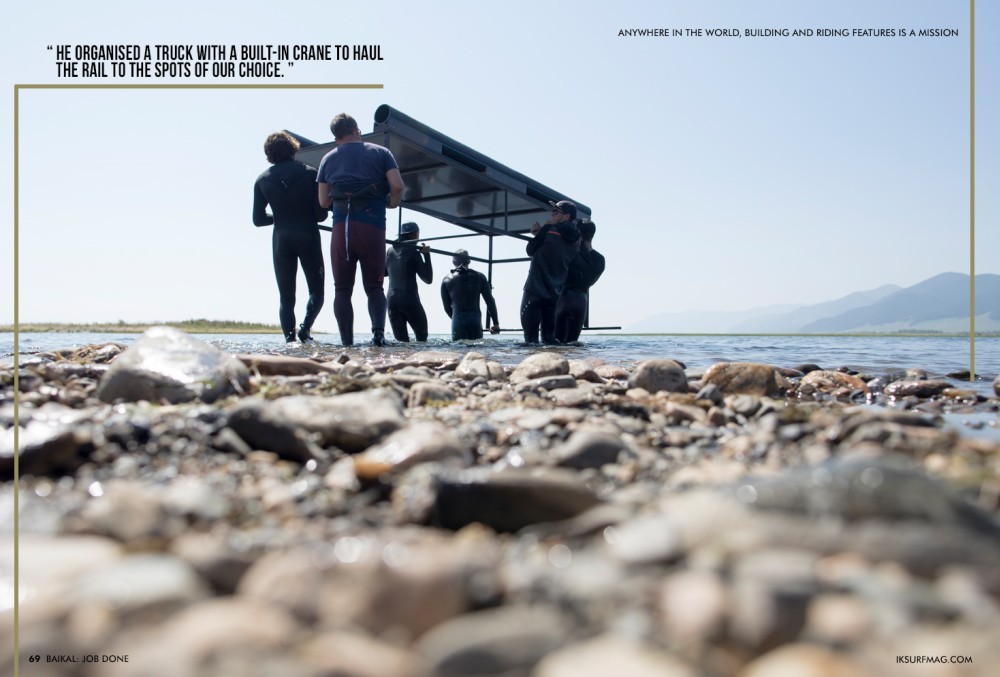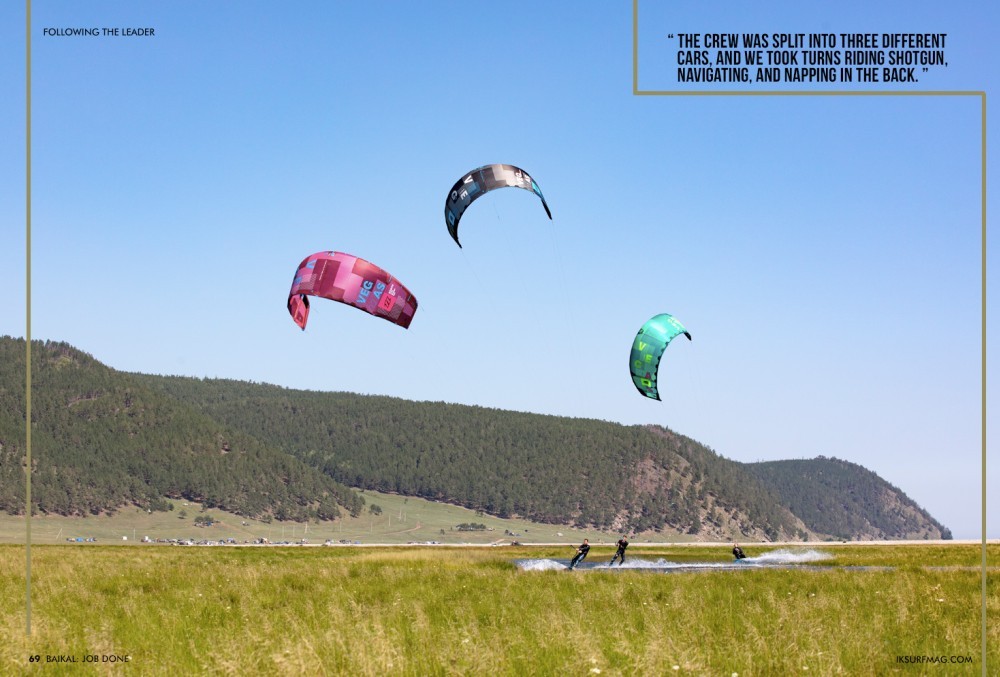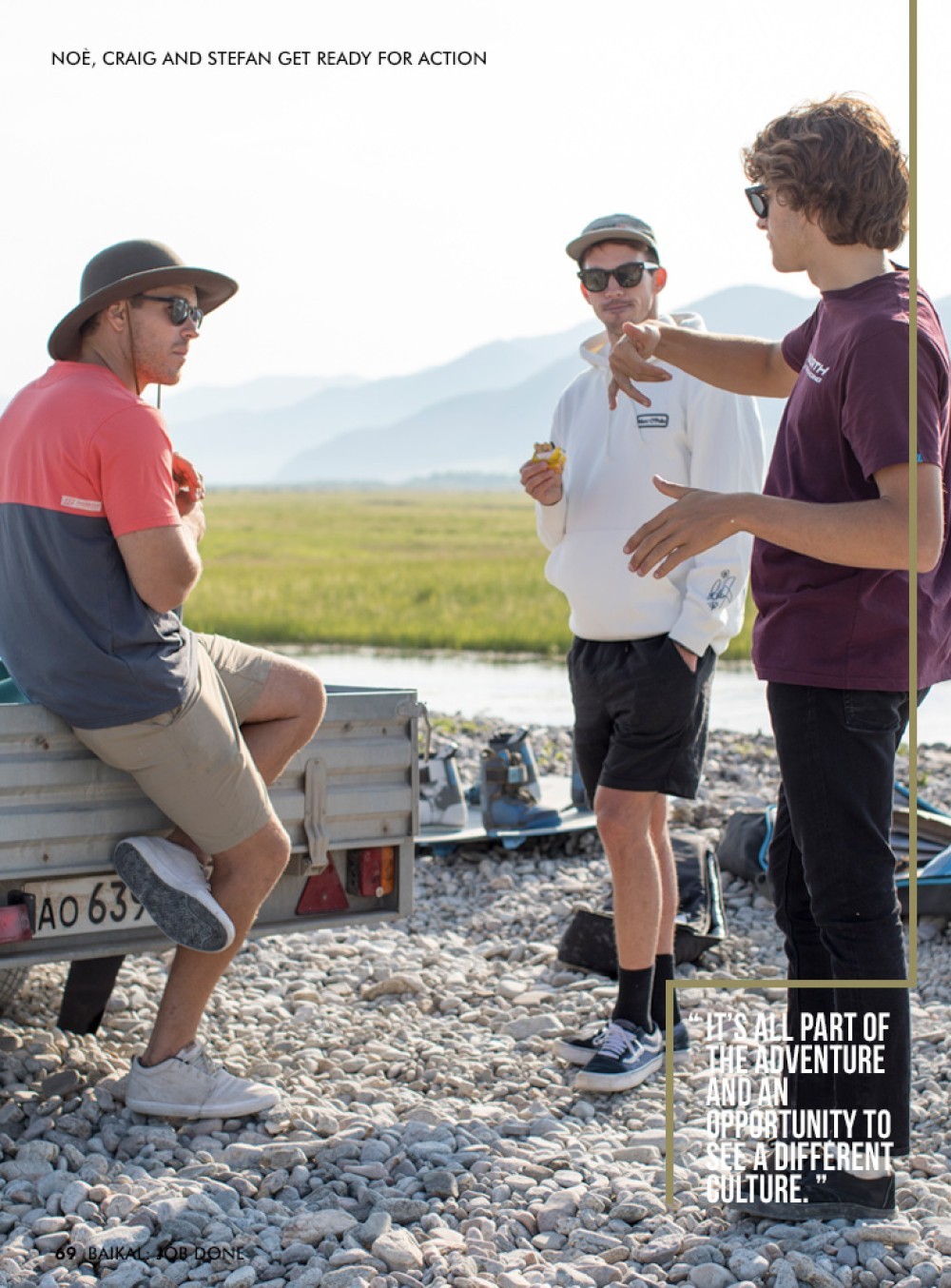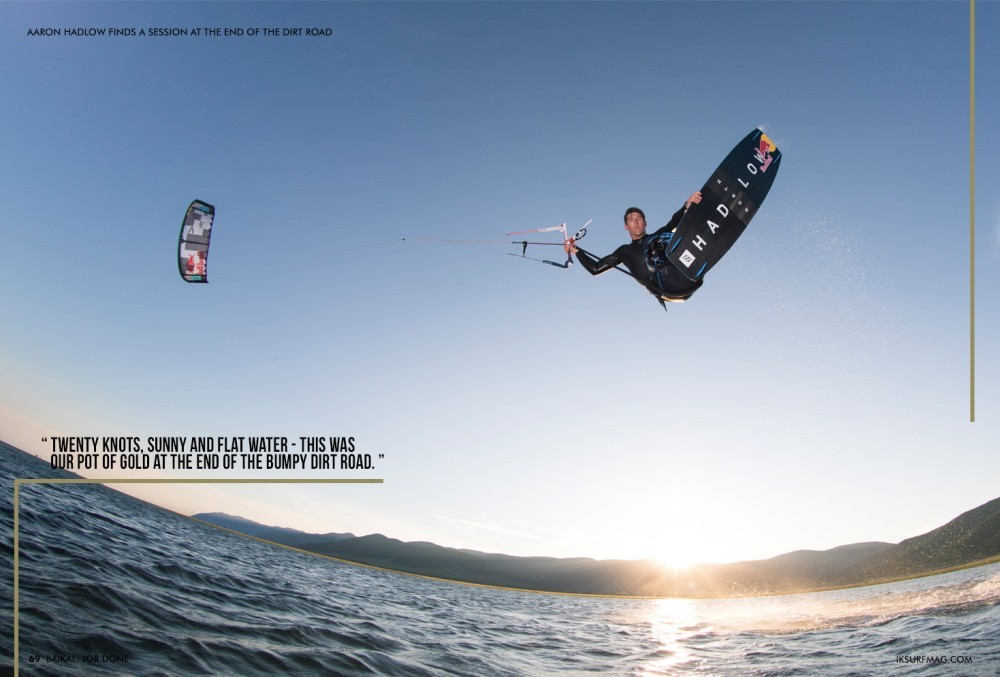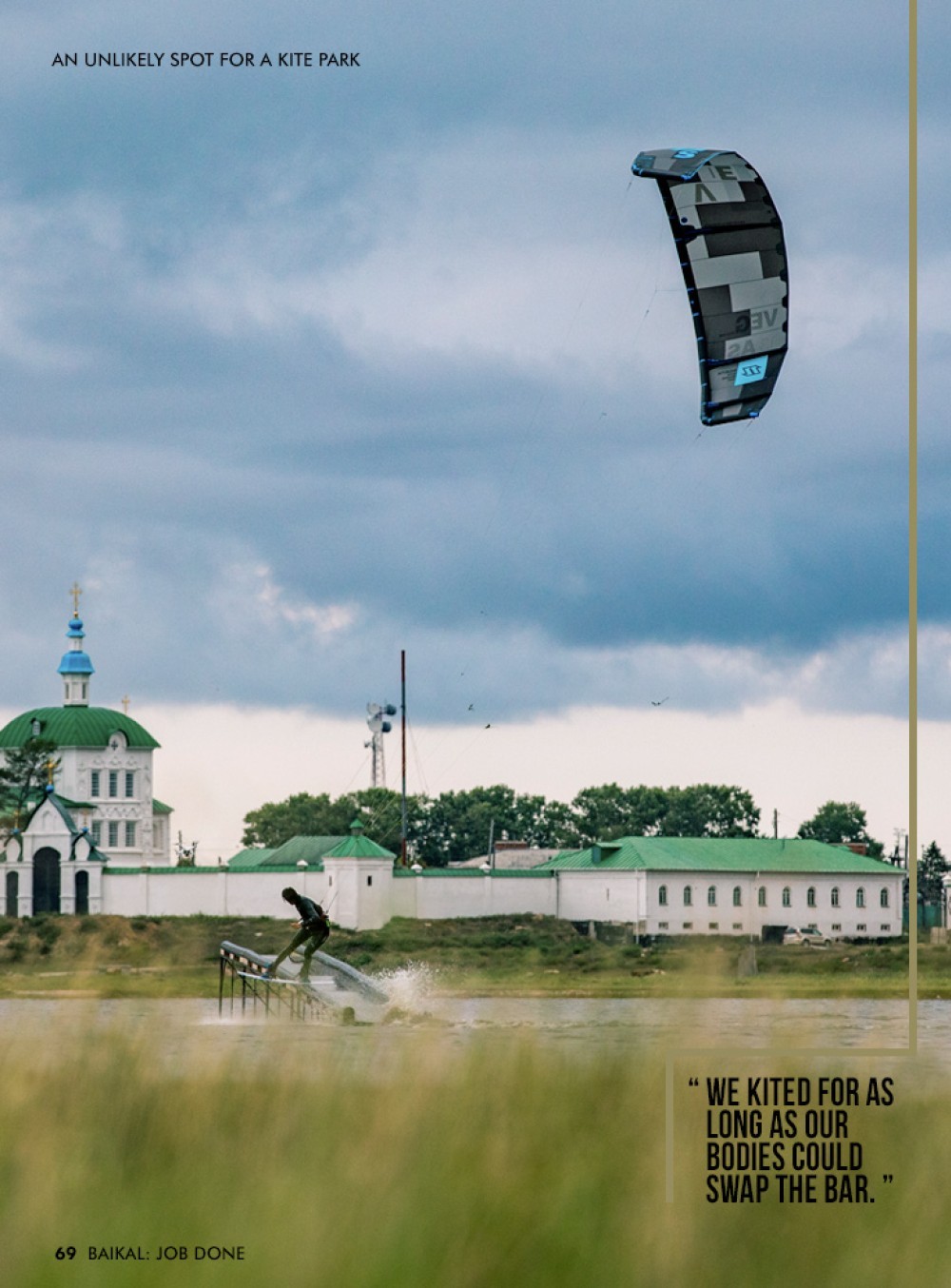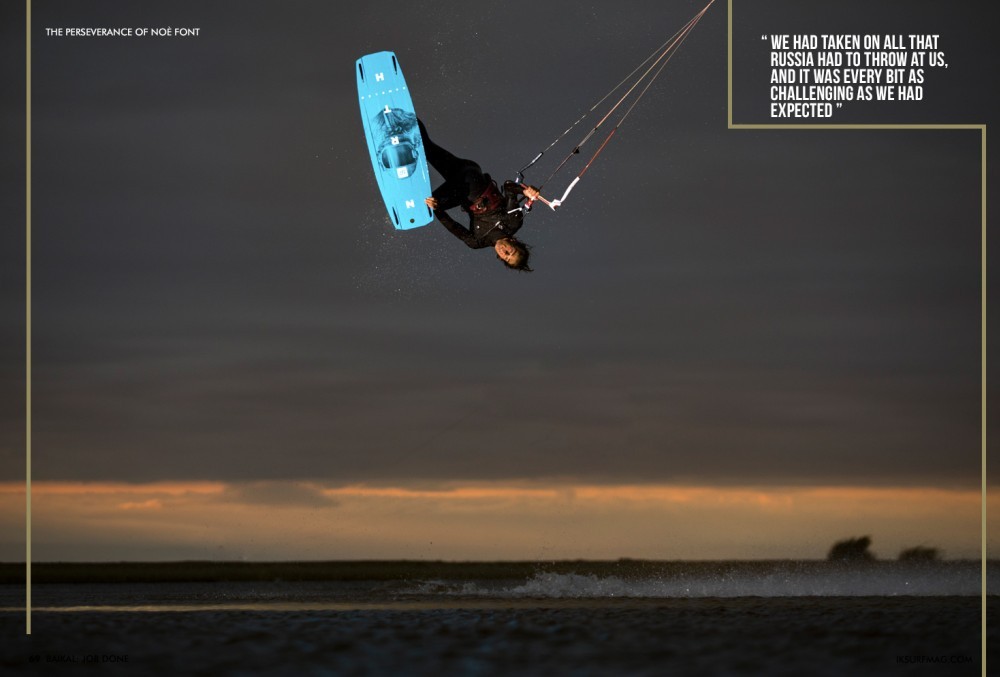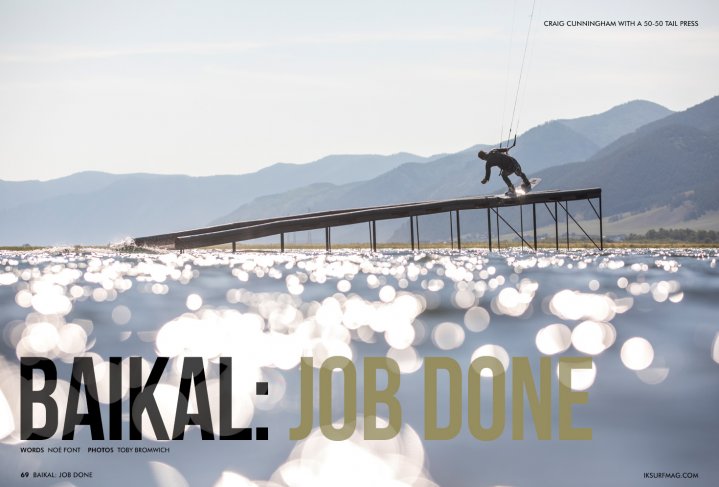
Baikal: Job Done
Issue 69 / Wed 13th Jun, 2018
From Russia with love, Noè Font, Aaron Hadlow, Craig Cunningham, Francesca Bagnoli and Stefan Spiessberger hook up with Artem Garashenko for an exploratory trip to the middle of Russia. Did they score? Read this first-hand account, written by Noè Font, to find out!
This isn’t the article where I sell you the story of a perfect trip. It’s not a trip to a remote island with wind, sun, palm trees and crystal clear water. Places like that are beautiful, but we’ve done that before. This time we were looking for something else— a different kind of paradise. Beauty comes in many forms, and we were reminded of this in Russia.
The first few emails came around, and they talked about Lake Baikal, the deepest freshwater lake in the world, in the middle of Russia. I mean, who wouldn’t get excited about that? Russia is a country I knew little about, and Siberia had never been on my bucket list. I went ahead and briefly Googled it. After viewing just a few photos, I was intrigued.
For the trip, we assembled Aaron Hadlow, Stefan Spiessberger, Craig Cunningham, Francesca Bagnoli, Artem Garashenko and myself along with the usual media crew: Toby, Chris, Carlos and Tommy, the boss.
Artem was our guide. He’d been there a few times already and took care of the logistics for the trip. In the weeks before the trip, he warned us of the cold and rough conditions we were going to encounter. We packed our thick wetsuits and the clothes you’d bring on a trip to the snow. Over the years our good friend and photographer Vincent Bergeron, has repeated his saying: “Never, trust the local. Ever”. Once again, it was proven correct. We landed in Russia to much better weather than expected: 30 degrees Celsius and sun.
When you look at Lake Baikal on a map, you see its shape is very stretched out and narrow— 636 km long and 79 km wide. In winter the lake freezes and the ice is thick enough to drive on, but in summer you have to drive around it.
On arrival, Artem briefed us on the area and the two main spots and the two different wind directions. One place was a river mouth, and the other one had a church as a backdrop. Both locations are around six hours away from Irkutsk, the main city, on opposite sides of the lake. We were going to spend two weeks out there, so we set our main base on the outskirts of Irkutsk.
During our first week, the forecast was light, and the chances of wind were slim. Artem took us out to the local cable park to meet the local kite community. They welcomed us with excitement. Photos were taken, babies were held, and gear was signed.
When we arrived in Irkutsk our local contact, Mikhail had organised to build a rail of our choice with some local welders. It isn’t easy to create an obstacle for kiting; they have to be fast to set up, easy to carry and a decent length. We arrived at the warehouse, and there it was. Five pieces, each one of them too heavy to move alone. Luckily for us, Mikhail was the man. He organised a truck with a built-in crane to haul the rail to the spots of our choice. This saved us. We could have never moved that rail out of that warehouse without him.
The first move was to the river mouth. The chances of wind were very slim, but we still made the drive to check it out. Two hours down the paved road and another four on a long and bumpy dirt road— through a green field and over stones— we finally found ourselves at the end at the tip of a sandbar. Or should I say “stone bar”? Either way, it was the spot of our dreams. It looked insane— stones instead of sand, grass hills instead of palm trees, wild horses and fresh, clear water. We spent the whole afternoon waiting for the wind, but it only picked up enough for a quick cruise on the foil. Nevertheless, we were all frothed up to ride there at some point during the trip.
The wind finally made an appearance in the forecast, but on the opposite side of the lake, so there we went. The crew was split into three different cars, and we took turns riding shotgun, navigating, and napping in the back. Unfortunately, all the 4x4’s you can rent in Irkutsk have more than half a million km on the counter. So, an hour into our 4-hour drive, one of the cars broke down. Artem immediately took control of the situation and made some phone calls. After what sounded like a heated discussion he said, “we must wait”. And that we did for 1 hour, 2 hours, 3 hours…
We decided to spend our time at a little bar by the road—the kind of bar with dissected bears hanging on the walls. The replacement car finally showed up. It was a Range Rover, but they told us that such a vehicle had to be hired with a driver. He was a maniac. All the roads have only one lane, and they are full of tight bends and turns, never offering a chance to pass the car in front. Somehow made it work.
His timing was perfect, just, one second too late and we’d have lost our boss and camera crew to an accident with a transport truck. The guys tried to tell him to take it easy and slow it down on many occasions, but communicating with him wasn’t easy. Maybe that was a result of the sneaky Vodka shots he’d have throughout the day? We tried to keep up with the Range Rover, but it was too fast for our cars. Around eight hours after we left the house, we arrived at the spot.
There were two hostels in the little village, one grocery store and one restaurant. The “good” hostel was fully booked, and our only option was to spend the night in a room above the restaurant. We all agreed those were the dodgiest beds we had ever slept in. In hindsight, it’s all part of the adventure and an opportunity to see a different culture. It made us realise how dependent we are on everyday luxuries like comfortable beds and diverse food options. That being said, it wasn’t what we were hoping for after 8 hours of driving.
The next morning we had breakfast in the restaurant downstairs. At that point, we hadn’t yet realised that same food was going to be our diet for the next four days. It was a meatball based diet, which eventually turned into a joke. Meatballs for breakfast, lunch and dinner with the occasional salad or soup offered on the side. Meatballs in tomato sauce, meatballs wrapped in pasta and meatball soup were just a few of our main dishes. We all ate at least three servings of meatballs per meal. On the bright side, the total cost would round up to $20 for the entire crew per meal.
We rushed to set up the slider before the wind came in. It took us a while. The pipes didn’t line up together, so we had to smooth up the surface with a knife. Once the wind came in, it was game on. We split the crew so that we could be as productive as possible. Some would film on the slider while the others shot freestyle photos. In photoshoots like this, there’s always a list of high priority shots that need to be done, especially the cruising shot. Get a photo, video, water angle, drone clip, done. After that, it is time to throw down.
It was a perfect first day of action. We figured out the line on the rail, and the freestyle team pretty much landed all their tricks. The next day, a storm rolled in. It was cloudy, rainy, and cold. Finally! We focused on doing some big air and mega loops. Later in the day, we drove up the “beach” to check out another little sandbar.
It was freezing, but we still went out for a session on our smallest kites. We laughed at how fast they moved up and down in the window and stacked a few more clips. At sunset, the light shone through the little gap between the clouds and the horizon. It looked cool in the photos. After that, the forecast pretty much died but we stuck around the area hoping the slight chance of wind further north would materialise.
Back on the road. Four hours later we arrived at the beach where the cows sunbathed by the shore of the lake. We found a light onshore breeze, so we didn’t bother. We drove back that same day, packed up the slider and went back to Irkutsk.
Halfway through the second week. With a couple of sessions in the bag. All our hopes were focused on a single day of wind that was showing up in the forecast.
We packed the cars and headed back through the bumpy dirt road, the green field, over the stones to the end of the sandbar. Or was it rock bar?
We found a place to stay close by, had lake fish for dinner and slept early. At dawn, we were ready to roll, and it was windy. We found breakfast and arrived at the spot. Twenty knots, sunny and flat water— this was our pot of gold at the end of the bumpy dirt road. It was epic. Tricks were landed, shots were fired, clips were stacked, and fun was had. We kited for as long as our bodies could swap the bar. Job done. One more day and we were out of there.
Everyone was frothing to get back to Irkutsk for a real meal and some drinks. Shortly after departing, the car broke down in the middle of the damn bumpy dirt road. We had no reception. Artem took control, drove to find reception and make a call. No one cared because it was the weekend.
One random stranger drove by and offered to tow the car behind his truck in exchange for a stack of cash. We had to go something like 100km down the bumpy dirt road. The rope broke a few times. We arrived at the restaurant past midnight, ate real food, and drank beer. The maniac driver had a strawberry milkshake. It felt good.
The following day we had our airport transfer at 3 A.M. The trip would not be complete without another flat tire. The maniac driver tried to change the tire, but the car fell off the jack. The brake discs were toast, and the vehicle was unmovable. We found another car, got to the airport and checked in. Safe at last, we had taken on all that Russia had to throw at us, and it was every bit as challenging as we had expected.
Baikal might not be on your bucket list of spots to kite, but sometimes it’s good to try somewhere new, seek out new beaches and confront the obstacles that lie in the way. Thanks for all the memories Russia… Until we meet again!
Videos
By Noè Font




